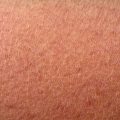The skincare realm can be quite confusing for most people, especially for those trying to build up a skincare routine without any previous experience. With each label on every bottle, tub, and dropper listing hundreds of ingredients, we can’t blame them either.
Stearic acid is one of the many ingredients that frequently pops up on the labels of skincare products, but few people actually understand what it is. If you’re not one of those people, then you’ve come to the right place. Read on to learn more about stearic acid.
Stearic Acid - What it is and Where it’s Found
Stearic Acid, often shortened to SA and frequently called octadecanoic acid, is a long-chain, saturated fatty acid present in animals, humans, and certain plants. It looks like a pale-yellow, waxy substance with some solidity to it.
It is often used to make cleansers and soaps, to improve the texture and efficiency of cleansers, skincare products, and lotions, to make cosmetics and makeup, and much more. Its structure is what allows it to improve the consistency and texture of many of the products that it is incorporated into.
Stearic acid can improve the water solubility of many household and skincare products, which would be difficult otherwise since oil does not mix well with water. It is a natural ingredient, which is why it is often found in beauty and skincare products as a substitute for other chemical ingredients.
It occurs naturally in animal fats, particularly pork fat and certain plants that contain oils and fats. These sources are pressurized and heated so that the stearic acid can be isolated and removed safely and efficiently.
It is then processed via distillation, steaming, and then cooling. The finished product is a concentrated version of stearic acid, which generally appears as a kind of wax. You can also often find stearic acid in some supplements, like magnesium stearate.
Since one of the primary sources for the acid is from animal fats, vegans will probably want to stay away from products that include it. However, certain kinds of stearic acid can be derived from plants, like coconuts, to create a vegan skincare and beauty products.
Benefits and Uses
Stearic acid has many skin benefits, with the most prominent being that it is a kind of natural cleanser. It aids in removing bacteria and dirt from the skin’s surface, while also giving many body care products a waxy and creamy feel.
It can lock moisture into the skin by protecting the skin against water loss by creating a waxy, protective barrier. Stearic acid is actually what gives shea butter and cocoa butter their signature thick consistency and makes them lubricating as well.
While you may think that stearic acid would clog your pores because it’s a fatty acid, it won’t do so unless you are very susceptible to pore-clogging. It can actually cleanse your pores of any excess substances that often lead to whiteheads and blackheads.
Stearic acid is generally safe for even the most sensitive skin types, including sun-damaged skin and mature skin. However, if your skin is quite sensitive, you should start using products with SA in them quite sparingly.
The acid is somewhat soluble in water but becomes less so when exposed to alcohol. It can help lower an oil’s surface tension, which allows it to combine better with water, in turn enabling you to wipe the oil from your skin, along with any other debris and microbes.
Side Effects and Risks
The FDA (Food and Drug Administration) considers stearic acid safe for consumption as an additive in food and limited quantities on the skin. Studies have found that stearic acid is not a photosensitizer, meaning that it will not make you more susceptible to sunburns. It is also non-carcinogenic and will not irritate your eyes.
The majority of people will not experience any adverse side effects when using stearic acid on their skin since it’s already found in humans naturally. However, as with many other skincare products, if your skin is fairly sensitive, then it’s possible that you will experience a mild reaction.
Even though the substance is fatty, stearic acid has not been linked to any cardiovascular issues. It is also the immediate precursor to oleic acid, which is an essential fatty acid that can be found in most heart-healthy olive oils. Many studies have also concluded that the effects that stearic acid has on one’s cardiovascular health are generally more beneficial than those of trans monounsaturated fatty acids.
Applications
Stearic acid is most commonly found in facial cleansers, bar soaps, shampoos, body washes, and even laundry detergents. When added to soaps, it acts as an emollient to thicken and harden formulas into solids. It also reduces the runny, thin feeling of soaps that have been watered-down.
Since it is a surfactant, it can reduce the surface tension of oils, which then allows for water and molecules to combine better. This means that it can ensure that emulsions are not separated into different layers of oil and water.
This extends the shelf life of certain products, but it also means that you do not need to shake products containing stearic acid to combine them vigorously. The cleansing properties that stearic acid has make it quite useful when added to soaps and face/body washes, as it can cleanse the pores of dirt, oil, and other debris that may be clogging them.
Stearic acid can also be found in candles, where it acts as a hardener. It takes longer to melt wax that is harder, which means that candles containing stearic acid can last much longer than those that do not.
Stearic acid also causes wax to shrink when it is cooled, the final products can be removed from their mold more easily.
Wrapping Up
As you can see, stearic acid boasts plenty of benefits. We hope that we were able to demystify this often-confusing ingredient, and encourage you to consider more skincare products containing stearic acid!





